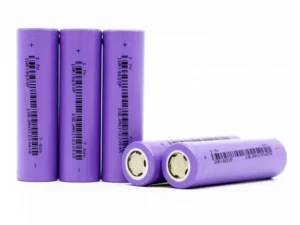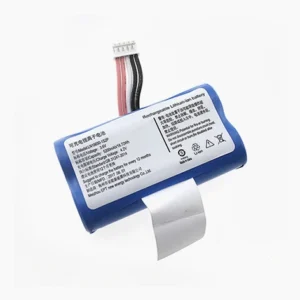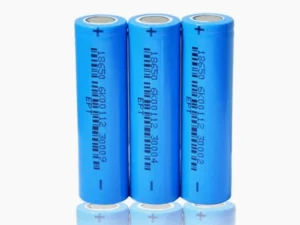Introduction:
Finding an energy storage device is difficult, but the lithium ion battery fulfills this requirement. You can charge it and use it. This article will teach you how to charge a lithium ion battery.
What do you know about a lithium ion battery?

In a day, you would come across numerous appliances. Most of those contain lithium batteries. They possess rechargeable phenomena for working. Usually, lithium-ion batteries contain various numbers of lithium cells. Makers design and place the cells along a circuit. It is frustrating if you are using an electronic device and it frequently stops working due to low battery. You will always look forward to a long-lasting or rechargeable battery.
Components installed in lithium ion batteries
There are a few components installed in almost every lithium-ion battery. The working of a li-ion battery entirely depends on the quality of the components. If manufacturers use suitable materials, you can use lithium-ion batteries for a long time. Moreover, you won’t have to do the maintenance lithium battery. Let’s now briefly discuss them. To understand them, you must know little about the electrochemical process of lithium-ion batteries.
1. Electrodes
Negatively and positively charged electrons and ions flow in a circuit. You can call it a collector of current.
2. Electrolyte
An electrolyte is a fluid that conducts electricity.
3. Cathode
It is a positively charged electrode.
4. Anode
It is a negatively charged electrode.
5. Separator
A separator is like a porous membrane. The purpose of the membrane is to separate both electrodes in the electrolyte mixture. Also, it transfers the lithium ions from one place to another.
6. Current collectors
If you read the detailed structure of lithium-ion batteries, you might have encountered the collectors. You will locate it at the ends of electrodes where terminals of the cell connect. Hence, the electric current flows from the Li-Ion Battery to the appliance connected to it.
The working principle of lithium ion rechargeable battery

A lithium-ion battery works because the lithium ions follow the principle of electrochemistry. So, you have connected the Li-ion batteries to any electrical appliance. The lithium ion battery is in its discharge state. Your appliance will be charging now. At the anode, lithium atoms undergo ionization. When this happens, the electrons release their ions. The ions travel from the anode to the electrolyte. They practically spread in the electrolyte. Afterward, ions attract the cathode. Then the ions combine with lithium electrons. Soon they become neutral. The separator film contains very tiny holes, allowing the small lithium ions to move through this membrane. They provide energy for charging.
Next, we move to the case of charging the battery. The same process occurs but in the reverse direction.
How to charge a lithium-ion battery?

How to charge lithium ion batteries is commonly asked by many of you. You have to connect the lithium-ion battery to its charger. The ions start flowing from the cathode to the anode; hence current flows in the same direction. An external circuit provides lithium ions to the circuit. It creates potential differences in voltage between electrodes. That shows how the battery gets charged. Ions are very small so they can operate on high voltages. Therefore, it contains a large number of charges. The lithium ion batteries could have electrodes made with a variety of materials.
More or less, the charging of rechargeable lithium ion battery depends on voltage, not current. The battery requires a voltage from 3.7 Volts to 4 Volts. The makers design the cells of the battery to withstand voltages. You might not know, but you cannot overcharge the batteries. It would eventually damage them by overheating. Eventually, it reduces battery efficiency. Or, in an extreme case, a lithium-ion battery might explode.
Use a proper way to charge the batteries. So, you will need a lithium ion battery charger. Sometimes chargers can improve the efficiency of the battery or decrease it. A particular charger would only help it achieve a great charging speed.
Benefits of using the batteries
The rechargeable lithium ion batteries have very lightweight. Therefore, Li-ion batteries are great to use in a variety of electronics. The weight helps you to carry it easily wherever you want. The lithium ion battery doesn’t provide any damage to the environment. Hence, consider these to be eco-friendly ones. It has a compact size, so it fits in the appliances easily. Traditional batteries often require complete maintenance. However, lithium ion batteries don’t need maintenance. You get a variety of options for its usage. It has excellent efficiency. Many other batteries often lose their ability to provide 100 percent output, but this one is the best. It smoothly works for an extended period until it doesn’t get any technical issues.
It has a significant number of charging cycles. For example, many of them include 1000 charging cycles. Once it completely discharges, you only have to plug in its charger. Plug off the charger only when the battery gets full charging. You don’t need to charge it frequently. Also, it has a low rate of discharge batteries. It takes a while for it to drain. The power remains constant when you use it, and its voltages don’t fluctuate. It takes only a few hours to charge the battery.
Uses of the Li-ion batteries
Rechargeable batteries have different applications. For example, people use it in UPS. They install lithium-ion batteries in the solar panels to provide electricity. That is because lithium ion batteries charge quickly. Then, they use it for security alarms because of guaranteed life. Brands usually keep these in toys.
Conclusion:
You must have now understood the charging mechanism of the lithium ion battery. People widely use them in different appliances. Further, it has many features that encourage them towards these batteries.
